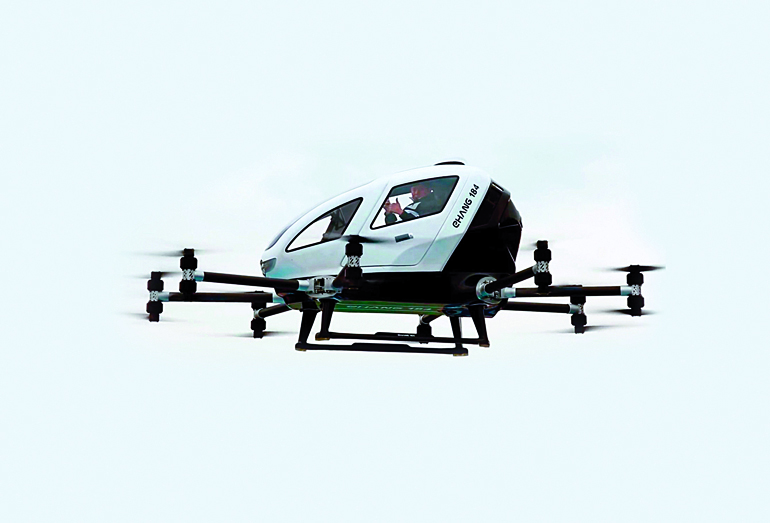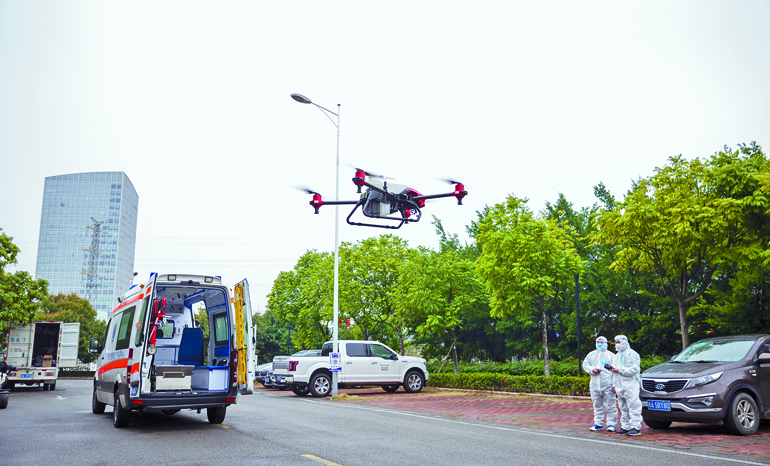
Latest News
- Hyundai E&C Accelerates Global Nuclear Expansion into the U.S. Nuclear Market
- Hyundai E&C Shifts into High Gear to Enter Nordic Large-Scale Nuclear Market
- Hyundai E&C Strengthens Korea-Japan Cooperation in Energy Transition and New Growth Businesses
- Hyundai E&C Signals Green Light for Large-Scale Nuclear Power Plant Business in Europe
- Hyundai E&C Unveils Energy-driven Growth Strategy “H-Road”
Drones with a thousand faces transform the world
.jpg)
Since last year, the African country Ghana started pharmaceuticals delivery services through a drone manufacturer Zipline. Recently, drones have been used to deliver the test samples of Covid-19 patients, and the global spread of Covid-19 has accelerated the commercialization of drones, indeed. Countries around the world are using drones to prevent the spread of the disease and deliver daily supplies and medical drugs to isolated homes and hospitals. Global institutions like McKinsey & Company and the Goldman Sachs forecasted that the global drone market would grow from 11.4 billion dollars in 2019 to 20.2 billion dollars in 2025.
.jpg)
US began providing medical drone delivery services
Zipline has begun emergency blood delivery services since 2016. This world’s first commercialized drone delivery system drops the blood-containing box attached to a parachute at the nearest hospital, reducing delivery time from 3 to 4 hours to 15 minutes. Zipline is currently preparing to launch medical drugs delivery services in the US. It was planning to launch the service in North Carolina in the fall of this year following FAA approval, however, the roll-out is expected to occur earlier with the Covid-19 pandemic. Delivery using drones helps to minimize human interventions, thus blocking contamination. Therefore, it is especially useful in case of a new infection outbreaks. Zipline CEO Keller Rinaudo in an interview with Spectrum said that “with its centralized distribution model, Zipline has helped Rwanda to essentially eliminate wasted(expired) blood products,” also sharing the company’s plan to launch a medical distribution center within just a few months in the US.

China uses drones for disinfection and delivery of test samples
China, having reported the world’s first confirmed case of Covid-19, is already using drones many different ways: first, is for spraying disinfectant. A Chinese agricultural drone manufacturer XAG joined hands with a drone manufacturer DJI to carry out aerial disinfection of the virus using drones. According to the company, aerial disinfection using drones is 50 times more efficient than when done by humans. Last February, in a hospital in Xinchang County, Jilin Province, a drone carrying patient test samples took off and travelled 3 km to the Disease Control Center, only taking 6 minutes compared to terrestrial delivery of 20 minutes. The CACC authorized flight routes for drones to deliver test samples. Drones are also delivering daily suppliers to residents. The World Economic Forum indicated that “China’s drone experiment will serve as a model for other countries to seek response to the current health crisis”, adding that “the key takeaway message is that public-private healthcare system integrating drone technologies can prevent the spread of an infectious disease pandemic in the future.”

Applications in the areas of military, agriculture, and construction sectors
Drones were first developed for military reconnaissance purposes, however are now being widely used for civilian applications, especially in the areas of agriculture and transport. The Chinese company DJI launched drones capable of spraying pesticides and planting seeds. In 2017, the UK was the first in the world to successfully grow barley using only drones and robot tractors. The construction sector is also actively leveraging drones, especially for inspecting the construction progress on construction sites not easily accessible by people. Since last year, Hyundai E&C has partnered with KT, Hyundai Rotem, Helsel and PIX4D to conduct a pilot test of a smart construction site management technology using aerial and terrestrial drones and 5G communications technologies. A drone takes photos of the construction sites and transfer the real-time data to the command center via 5G communications network. This helped Hyundai E&C to expand its portfolio, adding technologies capable of readily responding to issues that can occur in large construction sites when building cross-water bridges, high-rise buildings, or petrochemical plants. Moreover, the company is making full use of drones for surveying, which involves collecting and scanning the on-site topographic data with Leica Geosystems, PIX4D, and Helsel. Then, the use of BIM program is maximized to create 3d drawings based on geographical features and materials to minimize errors that can occur during construction. Such expanded applications of drones are expected to drive the smart transformation of the construction sector as well as other areas.

Drones are threatening airplanes, satellites, etc.
Recently, drones have emerged to threaten not only automobiles, but also airplanes and satellites. In 2018, the Chinese company EHang unveiled a unprecedented video of a self-flying drone taxi “EHang 184”. An unmanned aerial vehicle with eight propellers with only passengers on board and no pilot, managed to safely travel 15 km 300m at a 300m altitude with a speed of 130km/hour. From this year, the drone taxis will go into mass production before being commercialized as aerial taxis in Guangzhou in 2023. Moreover, Aurora Flight, a subsidiary of Boeing, successfully developed a Solar-Powered Stratospheric Unmanned Aircraft. The solar-powered drones to be primarily used for atmospheric researches have many advantages in that they are comparable to satellites with only 1/80 manufacturing and launching costs compared to satellites. Drones are definitely expanding their realm beyond Earth to outer space.
Wirte by. Lee Young-wan <Chosun Newspaper> reporter

